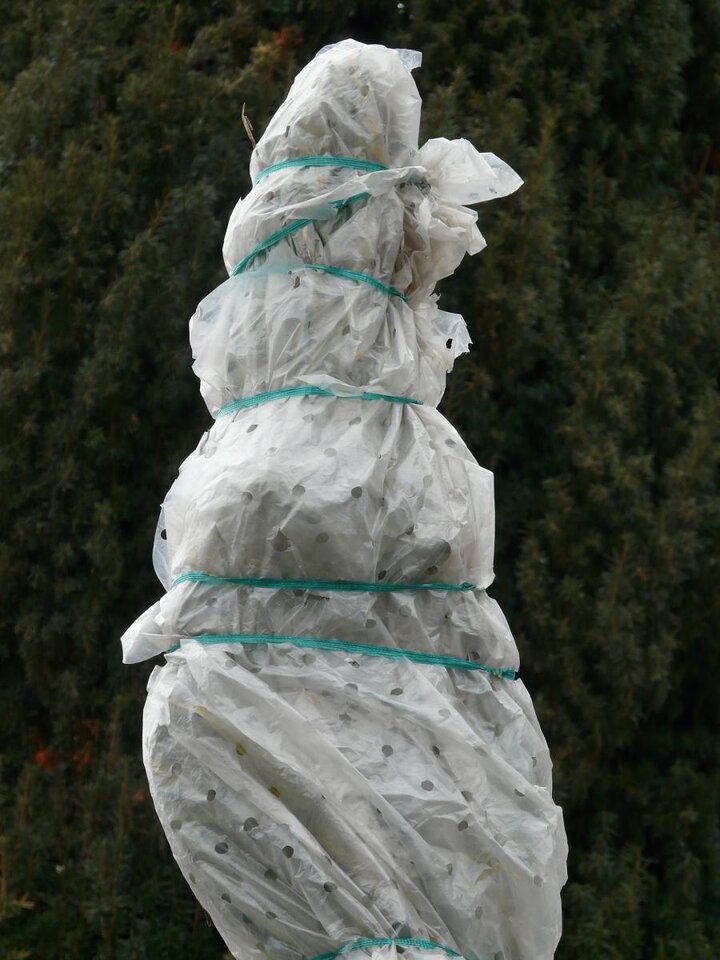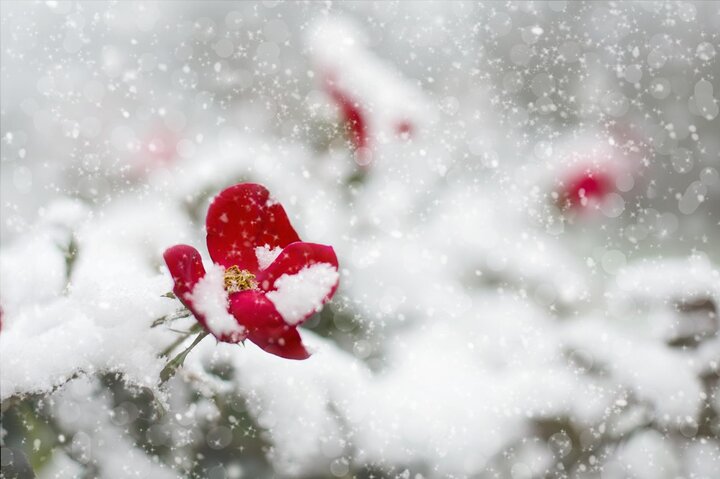Sarah Browning, Nebraska Extension Educator

Winter is a difficult season for roses. Image by Pixabay.
Winter is a difficult season for roses. Rapid temperature changes, sometimes as much as 20-30° F degrees in 24 hours, is very hard on plants. Unseasonably warm temperatures in January and February, along with repeated freezing and thawing of the soil can do a lot of damage. What can you do this fall to help your roses make it through winter with less damage and grow well next year? Here are some simple steps.
Maximize Plant Health
First, make sure your plants are healthy and not stressed this fall. Winter hardiness is improved by making sure your plants are healthy and vigorous in fall. Healthy plants have a better chance of doing well during winter than weak, pest-infested plants.
Roses should not be fertilized or pruned after the end of August.

Prevent water stress, or help repair summer water stress, by continuing to water your plants until the ground freezes. In the last few years, the soil has not frozen until late December or early January, so this means continuing to water your rose even after they are dormant. Soak plants to a depth of 8-12 inches, every 2-3 weeks while they are still growing and once a month after they are dormant.
Garden Clean-up
Fall clean-up in the rose garden is an important step; it helps reduce disease pressure on plants next year by removing infected leaves and stems and minimizing insect overwintering sites. Disease infected leaves, like those with black spot, harbor overwintering fungal spores which will re-infect your plants next year.
Remove fallen leaves and other debris from around each plant. If plants had severe disease problems this year, also remove the mulch beneath plants, since it is contaminated with bits of infected plant leaves.
Once plants are dormant, prune out any dead, broken, damaged or diseased canes. Once this is done, winter-hardy shrub roses do not require any additional pruning. Let them stand at their normal height throughout winter. Tie tall plant canes together loosely with twine to prevent wind damage.
Apply a dormant spray of horticultural oil to smother overwintering insect eggs and fungal spores.

Winter Protection Methods
Some shrub roses, like the Knock Out, Explorer or Buck rose series, perform well without extra winter protection. But more tender roses, including hybrid tea and climbing types, do require protection. Let your site and the history of winter damage on your roses guide you.
Mounding - Hill or mound soil, 10-12 inches deep, around the base of plants to protect any tender rose, such as hybrid teas, floribunda, and grandiflora roses, or plants that have suffered significant winter damage in the past. It’s particularly important that soil covers and protects the bud union on grafted plants. Take soil from another area of the garden, so you don’t damage your roses roots by digging around it.
Add a staked ring of chicken wire around the mound and loosely pack it with leaves or straw for an extra measure of protection.
Rose Cone - If a styrofoam rose cone is used, prune the bushes as needed to allow the cones to be place over the plants. You can do this as you perform the pruning mentioned above. Then, mound 6-8 inches of soil up around the base of each plant since the cone alone won't provide adequate winter protection. Finally, place a cone over each rose, securing it with heavy objects. Make small holes or slits in the top of the cone to provide ventilation.
Climbing Roses
Winter protection for climbing roses is important, since most bloom on the previous year's growth. One method of protection is to attach a sturdy pole to a fence or trellis. Push the pole into the soil near the rose’s crown so that it’s secure and make sure it stands taller the climbers branches. Untie the canes from the fence or trellis they climb and retie them securely to the pole. Wrap the canes in burlap and stuff the whole thing full of straw or leaves. This will provide extra buffering against temperature extremes and protect the stems from drying winter winds. Again, protect the base of the plant by creating a mound with soil.
Another method is to remove the canes from the trellis and bury them in a shallow trench, followed by a covering of 3-4 inches of soil. Add a blanket of 12-18 inches of leaves in early November. This will keep the sun from thawing the soil too early in the spring.

One Final Thought
Remember- plants may need watering during dry winters, especially in December, January and February. This is especially important for new plantings that were installed in fall and haven't had much time for root development. Wait until a warm day when the soil is not frozen.
Images by Pixabay.com.